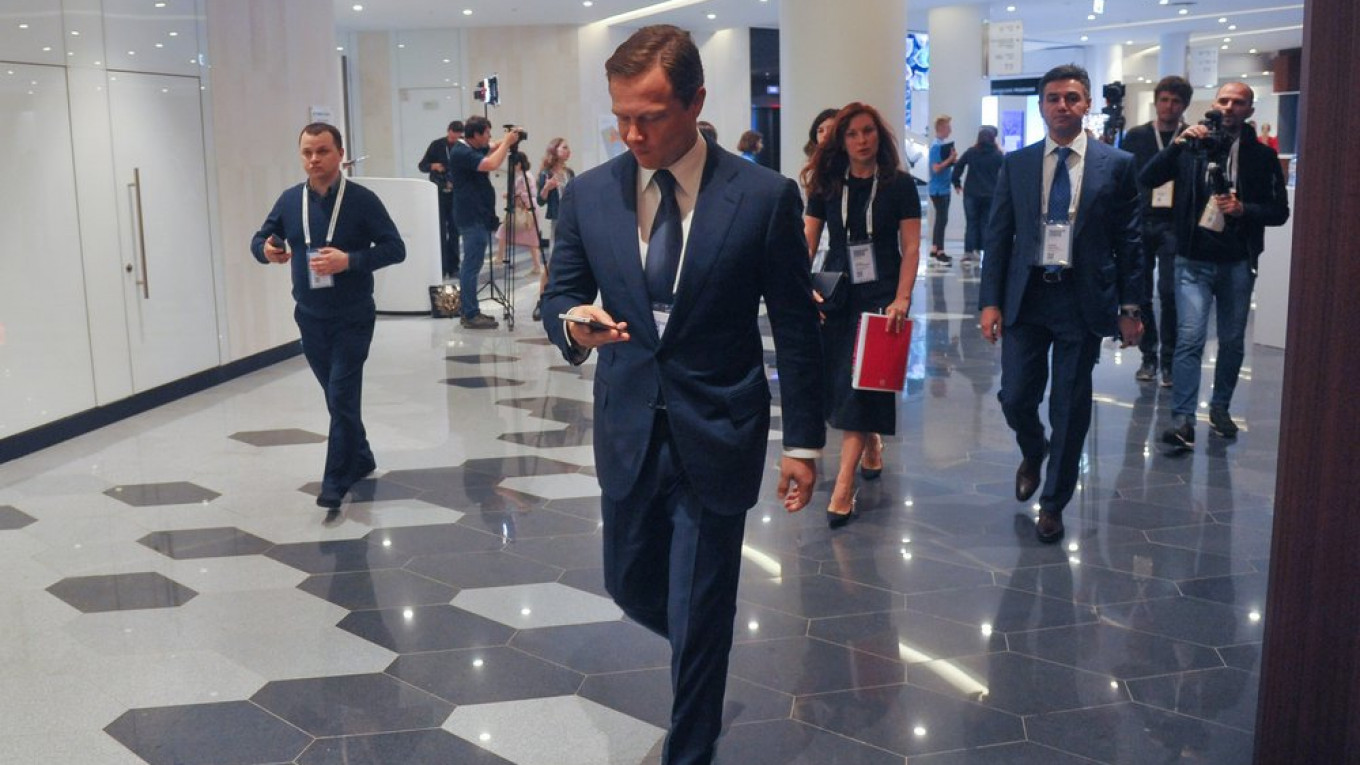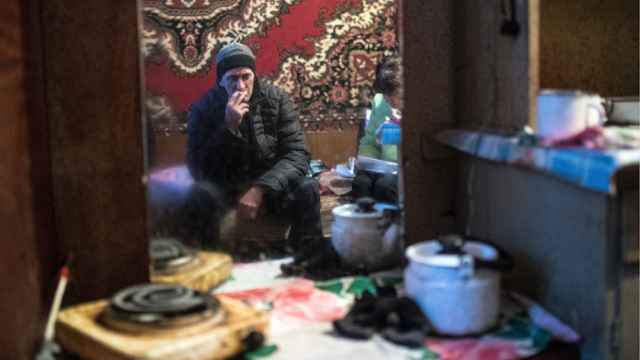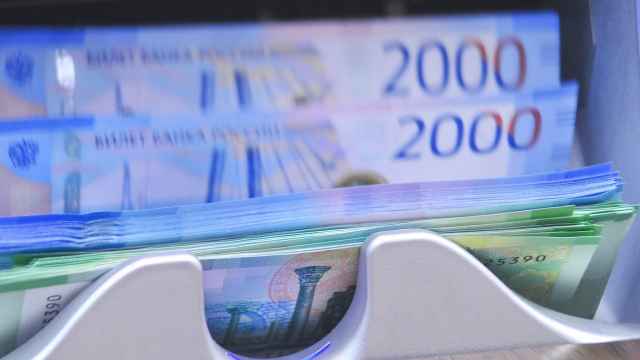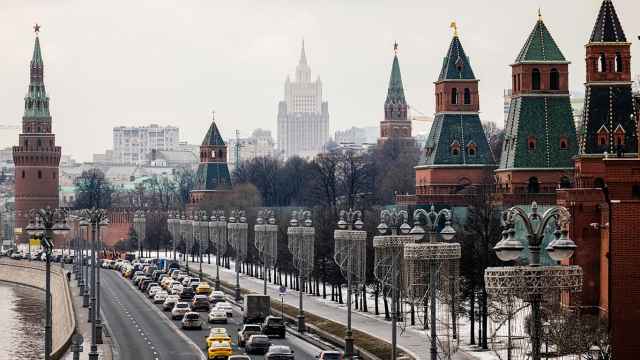Fresh economic data released this week told a tale of two Russian economies — resilient yet fragile, growing and contracting, confident while insecure.
On the home front, the country’s economy appears to be trundling along with modest success. But for sectors that depend on global trade the story is less positive, as the effects of a worldwide slowdown and the U.S.-China trade war look set to spill into Russia.
The dichotomy was exposed this week by the release of the influential purchasing managers’ index (PMI), as well as official statistics on the break-down of Russian gross domestic product (GDP) for the first half of the year.
In the domestic services and consumption part of the economy, the PMI reading climbed to a six-month high, indicating healthy growth and an increase in business performance. Firms reported stronger demand from customers, and said they were taking on more staff.
This was supported by official data from the Russian statistics agency on economic trends in the first half of the year, which showed consumption grew at a rate of 2.1% on an annual basis — more than double the pace of the overall Russian economy.
The growth in consumption suggests Russians are back to spending, following a pause at the beginning of the year in response to an increase in VAT to 20% from 18%, said ING’s Chief Russia Economist Dmitry Dolgin.
He said a shift toward digital and online services drove the increase, “meaning bargain-hunting by the lower-income groups … [and] the development of car-sharing, taxis, food delivery and other services in the large cities, leading to higher consumption from higher-income households.”
In manufacturing and exports, however, the picture is different.
The manufacturing PMI fell to its lowest level since the global recession of 2009 — 46.3 on a score where anything below 50 indicates contraction.
Moreover, “exports remain a dark spot for the second quarter in a row,” said Tatiana Evdokimova, chief Russia economist at Nordea.
Net exports fell by 4.9% in the year to June 2019, knocking almost two percentage points from Russia’s overall growth, added Dolgin. Even in the service industry, exports were a drag compared to domestic performance.
The fact that experts say the export slump stems from a combination of one-off internal factors, such as a weak grain harvest and the contamination of the Druzhba oil pipeline earlier this year, offers little comfort.
It could mean even more stagnation is on the agenda, according to Evdokimova.
“This time around [weak export figures] are not so much about the trade war, and more about seasonal issues. But when these seasonal issues vanish, the global slowdown will remain a risk for exports,” she said, adding that the trade war between the U.S. and China could yet “take its toll on the Russian economy.”
A report from the Moscow-based Higher School of Economics (HSE) this week went further, pointing to the heightened possibility that the trade war could lead to a “sharp drop in oil prices,” which would further hit Russia’s exports.
With such different perspectives depending on the vantage point, the debate around how long Russia can keep its two-track economy on the rails continues.
“Although there seems to have been little contagion into the service sector so far, forward-looking indicators such as output expectations signal concerns among businesses toward the prospects for wider economic growth,” said Sian Jones, chief economist at IHS Markit, which compiles the PMI readings.
Valery Mironov and Alexey Kutnetsov of HSE also suggested that the benign consumption figures could be masking a deeper deterioration. Their analysis found that “while in the first half of 2019, growth was observed in 15 of 19 industries of the economy, with a decline in four, in the first half of this year, the ratio was 8:12.”
“In other words, the number of sectors in decline grew three-fold.”
Moreover, consumer spending has been the engine of the Russian economy over the last decade and further improvements are a “remote prospect,” said Dolgin.
“Consumption volumes in real terms are 16% higher than they were 10 years ago, while GDP is only 10% higher. As an economy in general … we had some indulgence in the previous years. Now the focus is shifting to investment. As a result, there is not a lot of support … to protect current levels of consumption,” he added.
One side of that rebalancing is an attempt to cool the rapid growth in consumer loans, which has allowed an increase in household spending despite falling and stagnant real income. This week, new regulations came into force making it less profitable for banks to lend to risky clients. With the finance sector being one of the strongest economic performers, according to the HSE analysis, policymakers are poised in a delicate balancing act.
The other side is the attempt to stimulate non-energy exports and local investment in infrastructure. However, the pay-back from such investments is still out of sight, with the most significant government spending on the $400 billion National Projects program not scheduled until 2022-23.
Moreover, with the U.S.-China trade war rumbling on, Russia’s exports could further suffer. The Economist Intelligence Unit highlighted that 20% of what Russia sells abroad goes to countries currently embroiled in protectionist squabbles. With another 40% going to the EU, which is also set for an economic slowdown, Dolgin believes that external demand will not be a reliable source of growth.
The government does have significant resources at its disposal — $530 billion as of July 30 — should it choose to use them. Now that the government’s coffers have been repleted, decisions over how to invest future oil windfalls — set to be $31 billion next year — will be a decisive factor in which story of the Russian economy prevails: growth or stagnation.
A Message from The Moscow Times:
Dear readers,
We are facing unprecedented challenges. Russia's Prosecutor General's Office has designated The Moscow Times as an "undesirable" organization, criminalizing our work and putting our staff at risk of prosecution. This follows our earlier unjust labeling as a "foreign agent."
These actions are direct attempts to silence independent journalism in Russia. The authorities claim our work "discredits the decisions of the Russian leadership." We see things differently: we strive to provide accurate, unbiased reporting on Russia.
We, the journalists of The Moscow Times, refuse to be silenced. But to continue our work, we need your help.
Your support, no matter how small, makes a world of difference. If you can, please support us monthly starting from just $2. It's quick to set up, and every contribution makes a significant impact.
By supporting The Moscow Times, you're defending open, independent journalism in the face of repression. Thank you for standing with us.
Remind me later.







